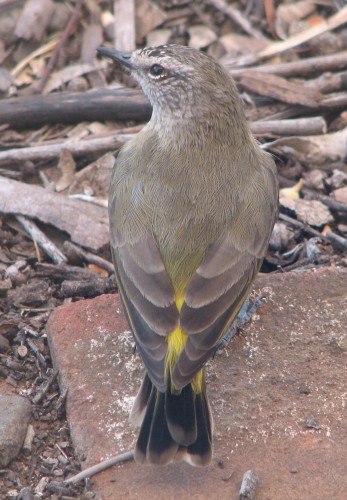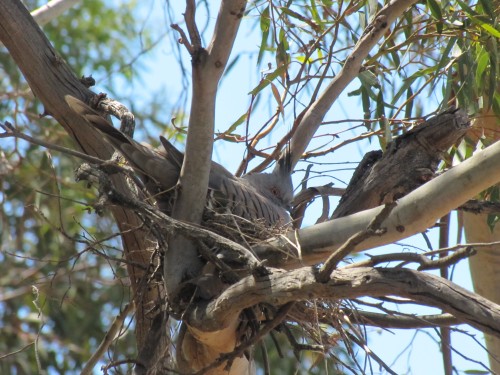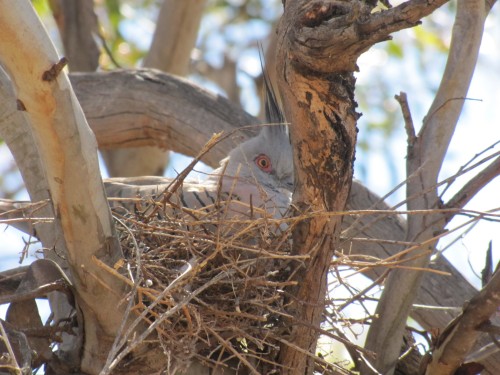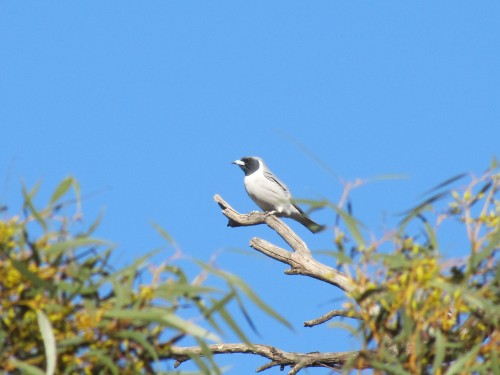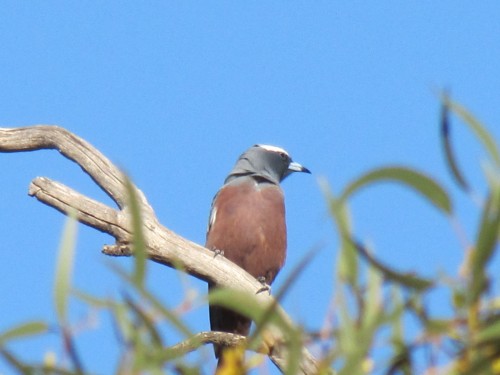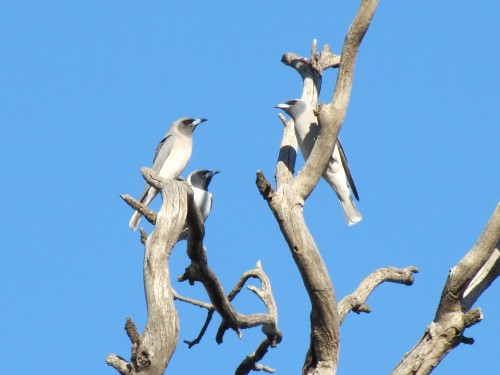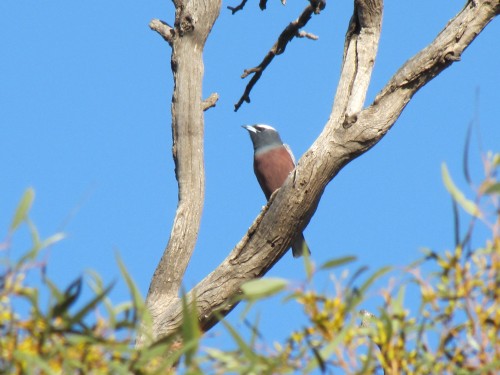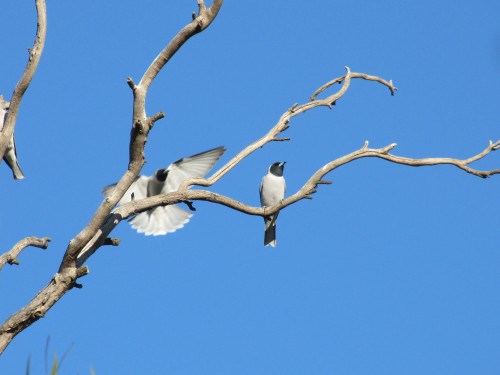Back to birding
Happy New Year readers.
First, an apology.
Sorry that I haven’t posted on this site much in recent months, not because I have lost interest or opportunities. Life has been a little rough in recent times with a number of health issues. Some of these have been dealt with and I am hopeful that things are improving. I hope to get out to do more birding and photography in the coming months, so stay tuned.
A few days ago I had a close encounter with several Yellow-rumped thornbills. I didn’t have the camera with me at the time, so the photo above was taken some time ago. On this occasion I was looking over the fence around our swimming pool watching the water coming from the filter as I was backwashing it. It was quite a hot day and three thornbills were attracted to the water gathering nearby.
One of the birds landed on the fence less than a metre from me, while the others hopped around on the ground less than two metres away. I love close encounters with the birds we have in our garden. Some of them can be quite confiding and can come very close. It is moments like this one that that makes me sometimes think that I should carry my camera with me on all occasions when in the garden.
Good birding.
Crested Pigeons nesting in our garden
On our return from a recent holiday in Sydney we were having lunch on the back veranda. I was watching a Crested Pigeon fussing about in a tree about twenty metres away. Next thing it settled down as if on a nest. I left my food – actually I think I was at the cuppa stage of the meal – and moved slowly and carefully towards the nest. I’d remembered to go inside to get my camera first.
Sure enough – the pigeon was sitting on a nest. Crested Pigeons are very common around Murray Bridge. At times I have counted up to 50 sitting perched on power lines, often in a row. It’s quite a spectacular sight, though it is not common to see so many at one location. Loose groups of 5 to 15 are quite common, however.
Crested Pigeons are what I call a resident breeding species, meaning, they are resident all the year and that they breed in our garden. The nest shown in today’s photos is quite a substantial nest for a pigeon. Most pigeons and doves are not fastidious or elaborate when it comes to nest building. They seem to think that a dozen or so flimsy sticks placed at random in the fork of any tree or bush will do as a home for their chicks. How the eggs don’t fall through some nests I’ve seen is amazing. Still, they seem to manage; there are a lot of them around!
My writing of this post was interrupted by the load of washing finishing, and I am the one in our household who usually does the washing. The pigeon’s nest is near the clothes line and the bird is sitting tight, even when we walk within a few metres of the nest. She must have eggs, I think. I will keep a watch on proceedings.
UPDATE: January 22nd: over the last week we have had a heatwave with five days over 42C with several over 45C (113F). This was followed by several days of wild wind which broke several branches off our trees. The nest is still there but appears to have been abandoned.
Two kinds of Woodswallows
I have to admit that I enjoy doing the clothes washing. It gets me outside in the sunshine and fresh air. except when it is raining and blowing a gale. On those occasions I usually hang the washing on clothes horses on the back veranda.
The main reason I enjoy doing the washing is to do a spot of birding while hanging the clothes on the clothes line, or when getting in the clothes once they have dried. Last Saturday was a beautiful spring day here in South Australia. we’ve had some foul windy weather this spring some it was a pleasure to get out in the beautiful sunshine.
As I was taking the dry clothes off the line and flock of about 20 birds flew overhead, circled high above our garden and then swooped down and settled on several trees – all only a few metres from where I stood. I immediately identified them as woodswallows, but to my excitement, there were actually two different species. Forgetting all about the clothes I raced inside, fired up my camera and started taking photos.
The flock was made up of about 10 Masked Woodswallows and 10 White-browed Woodswallows, both great species to see at any time. The last time I saw either species here was in the year 2000. The White-browed I hadn’t recorded in our garden since the early 1990s.
I took quite a few photos, the best are shown here. After a stay of about 10 minutes they all flew off together. Later I read online of several other sightings of these two species in various places around the state. They sure get around.
The chase is on
A little while ago I was outside in the garden attending to one of those mundane jobs around the house. Okay, I’ll admit I was checking the washing hanging out to dry. My attention was suddenly grabbed by a great uproar coming from the local resident honeyeaters. They were creating a terrible noise, so I knew that something was disturbing them big time.
As I looked around a Collared Sparrowhawk (see photo above) landed on the power line coming in towards the house. Next thing, it took off after its lunch – a Common Starling. Well, I’m not sure if it actually caught its prey. The last I saw of them was the starling zooming a full speed across the garden and then weaving through the mallee scrub behind our house, hotly pursued at full speed by the hawk. I was amazed at how fast they were going, but when you consider those sharp talons, one can hardly blame the starling for getting a move on.
Murder in the garden
Many people enjoy seeing birds, especially those that visit their gardens. People also enjoy seeing birds in parks and reserves, on the beach or along rivers. They are variously described as “cute”, “pretty”, “delightful”, “wonderful” and many other such “nice” words.
Rarely are they described as gory, or brutal or even dangerous. The stark reality is that while many birds are indeed stunning in their colours, amazing in their survival instincts and quite fascinating in their behaviour, some species do have a gory, brutal (in human terms) side to their lives.
A few days ago I was hanging up the washing on the clothes line – or getting it off – whatever – and there was a sudden noisy kerfuffle in the trees nearby. The various honeyeater species were totally upset – and with good reason. A Collared Sparrow-hawk flew ponderously to a branch nearby, clutching a struggling bird in its talons.
The sparrow-hawk proceeded to gouge chunks of flesh off the hapless bird, feathers scattering in the breeze and all the while the rest of the avian community voiced their disapproval – or fears. I tried to sneak up for a closer look. I quickly dismissed the idea of racing inside to get the camera. It appeared to be a White-plumed Honeyeater being eaten.
This is the reality of life in the raw. To survive, the sparrow-hawk must eat. One bird’s death means another bird’s survival. In human terms it seems cruel and gory, but this is the way of web of life.
I didn’t get a photo, so I’ve included one below that I took some years ago.
This article was last update on 10th October 2015.
